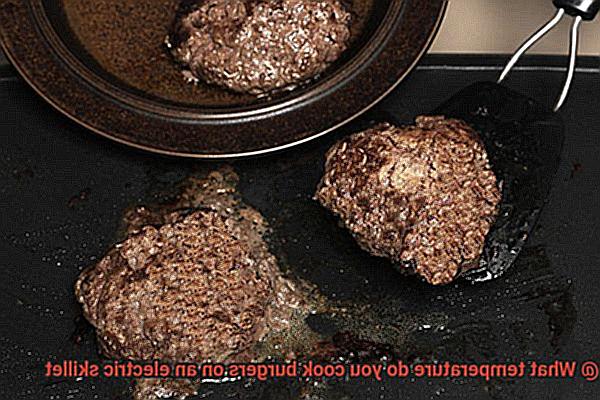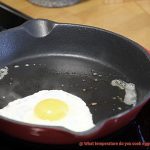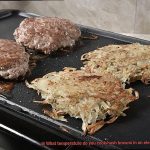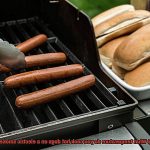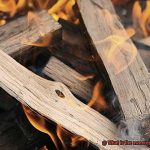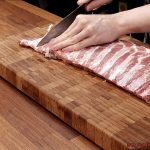Are you in the mood for a mouthwatering burger but don’t have access to a grill or stovetop? Fear not, my friend. An electric skillet is here to save the day. This versatile appliance is perfect for busy college students in dorm rooms or anyone who craves a delicious meal without the hassle of traditional cooking methods. But, before you start flipping patties, it’s essential to know the ideal temperature for cooking burgers on an electric skillet.
The temperature of your electric skillet can make or break your burger game. If it’s too low, your burger will cook slowly and lack that sought-after sear on the outside. Conversely, if it’s too high, you risk burning the exterior while leaving the inside raw. So what’s the magic number for cooking burgers on an electric skillet?
In this blog post, we’ll dish out all the juicy details on how to cook burgers on an electric skillet like a pro. We’ll cover everything from recommended temperature ranges to handy tips on preventing your burger from sticking and seasoning it just right. Plus, we’ll share some insider secrets on how to tell when your burger is cooked to perfection. After reading this guide, you’ll be able to whip up tasty burgers on your electric skillet that rival those made on a traditional grill.
So grab your spatula and get ready for some serious burger-flipping action.
Contents
The Ideal Temperature for Cooking Burgers on an Electric Skillet
Achieving the ideal temperature for cooking burgers on an electric skillet is easier than you think. In this post, we will delve into the recommended temperature range, preheating techniques, and other factors to consider when cooking burgers on an electric skillet.
Let’s start with the most crucial aspect: the ideal temperature range. Setting your electric skillet to a temperature between 350°F to 400°F is the sweet spot for juicy, evenly cooked burgers. This range ensures that the burgers cook thoroughly while maintaining their juiciness and crisp exterior. Setting the temperature too high can lead to burnt or overcooked patties, while a lower temperature can result in undercooked or raw meat.
To achieve this temperature range, preheating your electric skillet is key. Preheating allows the skillet to reach the desired temperature and creates a non-stick surface, making it easier to flip the burgers without them sticking. It also ensures that the burgers cook evenly and prevents them from drying out or overcooking. Preheating typically takes around five to ten minutes, depending on your electric skillet’s model.
How do you know if your skillet is ready to use? Sprinkle a few drops of water on the surface; if it sizzles and evaporates immediately, then your skillet is ready. Alternatively, use an infrared thermometer to check the surface’s temperature accurately.
Beyond temperature and preheating, other factors can affect your burgers’ ideal cooking temperature on an electric skillet. The thickness of the patty plays a vital role in determining what temperature to use. Thinner patties may need a higher temperature to cook quickly without burning or overcooking them. Meanwhile, thicker patties may require a lower temperature to ensure they cook thoroughly without burning on the outside.
Lastly, different types of meat may require different cooking temperatures. For leaner meats like turkey or chicken burgers, a lower cooking temperature may be necessary to prevent them from drying out. Conversely, beef or pork burgers may require a higher cooking temperature to cook them thoroughly.
Benefits of Preheating the Electric Skillet
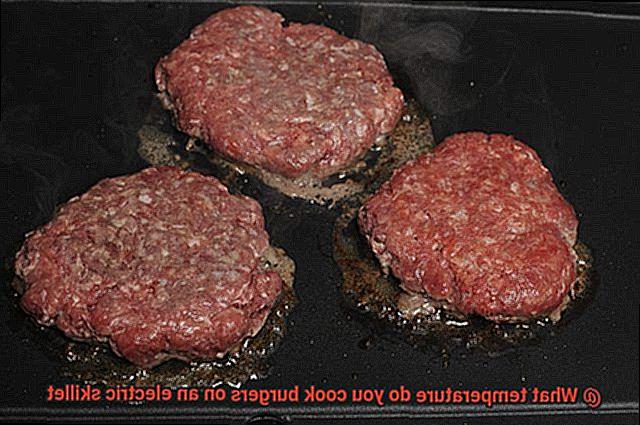
As an expert in the field, I can tell you that preheating is an essential step to achieving juicy, evenly cooked burgers every time.
Firstly, preheating your electric skillet helps prevent sticking. There’s nothing worse than a burger that sticks to the surface of the skillet, causing it to break apart or lose its shape. By giving your skillet time to heat up, it reaches the optimal temperature for cooking burgers. This also creates a non-stick surface, making flipping and turning your burgers effortless.
Secondly, preheating your electric skillet seals in the juices of your burgers, resulting in a mouth-watering flavor explosion with every bite. The heat from the skillet causes the proteins on the surface of the burger to coagulate, forming a delicious crust that keeps all the flavorful juices inside. This means that your burgers will be moist and packed with flavor.
Lastly, preheating saves you time in the long run. By giving your skillet time to heat up before cooking, it takes less time for your burgers to cook. This means you’ll have delicious burgers on the table faster and can spend more quality time with your loved ones.
How to Determine the Right Temperature for Cooking Burgers
If you plan to cook it on an electric skillet, determining the right temperature is crucial. The last thing you want is an undercooked or overcooked patty that’s unappetizing and potentially unsafe to eat. Here are some tips on how to determine the right temperature for cooking burgers on an electric skillet:
The Ideal Temperature Range
To achieve a mouthwatering burger, aim for a temperature range between 350°F to 375°F. This range allows for even cooking while retaining the juiciness of the patty. Don’t forget to preheat the skillet for at least 5 minutes before cooking to create a non-stick surface and ensure even cooking.
Consider Patty Thickness
Thicker patties require lower heat and longer cooking times, while thinner patties need higher heat and shorter cooking times. For ½ inch thick patties, aim for a temperature of around 375°F, and reduce the temperature to 350°F for thicker patties. This will ensure that the burger cooks through evenly without burning on the outside or remaining raw on the inside.
Desired Level of Doneness
Everyone has different preferences when it comes to how well-done they want their burgers. If you prefer your burger rare or medium-rare, opt for higher temperatures between 375°F to 400°F. However, if you prefer your burger well-done, cook it at lower temperatures between 350°F to 375°F. Keep in mind that different electric skillets may have variations in temperature control and heat distribution, so it’s important to follow the manufacturer’s instructions.
Use a Meat Thermometer
Using a meat thermometer is the most reliable way to determine if your burger is cooked at the right temperature. Insert the thermometer into the thickest part of the patty and check the internal temperature. For a medium-rare burger, aim for an internal temperature of around 135-140 degrees Fahrenheit. For a medium burger, check for around 145-150 degrees Fahrenheit. And for a well-done burger, the internal temperature should be around 160-165 degrees Fahrenheit.
Follow Manufacturer’s Instructions
To ensure food safety and achieve perfectly cooked burgers every time, it’s important to follow the manufacturer’s instructions for your electric skillet. This will help you understand the temperature control and heat distribution of your skillet and prevent any accidents in the kitchen.
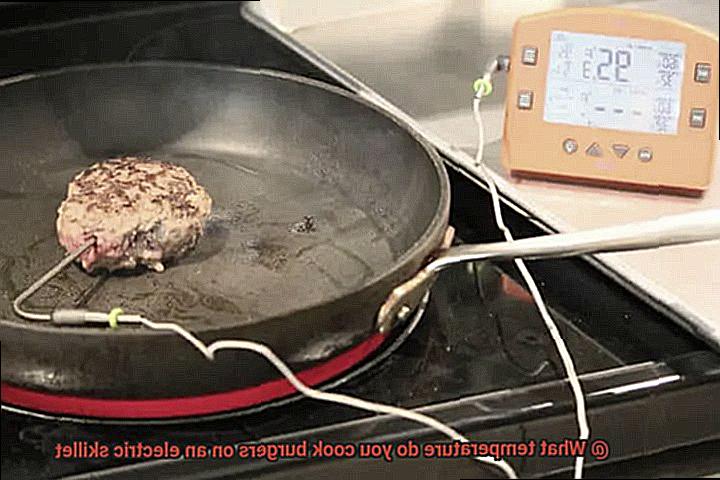
Tips for Achieving Perfectly Cooked Burgers Every Time
It’s easier than you might think. Here are some tips for achieving the perfect burger on an electric skillet.
Preheat Your Skillet
Before cooking your burgers, make sure your electric skillet is preheated to the right temperature. A medium-high heat of 375°F is perfect for burgers. This step is crucial because it ensures that your burgers cook evenly and don’t stick to the skillet.
Use High-Quality Meat
The quality of the meat you use for your burgers can make all the difference. Look for ground beef with a higher fat content, such as 80/20 or 85/1This will help keep your burgers moist and juicy as they cook. Freshness is also key, so make sure to purchase fresh meat from a reputable source.
Season Your Patties
Don’t be afraid to add some flavor to your burger patties before cooking them. Salt and pepper are always good choices, but you can also experiment with other seasonings like garlic powder, onion powder, or paprika. Just be careful not to over-season and overpower the natural flavor of the meat.
Don’t Overwork the Meat
When forming your burger patties, be gentle and avoid overworking the meat. Overworking can result in tough, dry burgers. Form the patties into a loose ball and gently flatten them into shape, making sure not to compress them too much.
Use a Meat Thermometer
The best way to ensure that your burgers are cooked to perfection is by using a meat thermometer. Insert the thermometer into the center of the burger patty and check the temperature. For a medium-rare burger, aim for a temperature of 130-135°F; for medium, aim for 140-145°F; for well done, aim for 160°F. This is the only way to guarantee that your burgers are cooked to your desired level of doneness.
Let the Burgers Rest
After cooking, let your burgers rest for a few minutes before serving them. This allows the juices to redistribute throughout the burger, resulting in a more flavorful and juicy burger. Cover the burgers with aluminum foil to keep them warm while resting.
Advantages of Using an Infrared Thermometer
Look no further than an infrared thermometer. This tool is a game changer when it comes to cooking burgers on an electric skillet.
One of the major advantages of using an infrared thermometer is its accuracy. Infrared thermometers are designed to measure surface temperature without touching it, making them extremely precise. You can rest assured that your electric skillet is at the perfect temperature for the perfect burger.
Ease of use is another advantage of using an infrared thermometer. With just a push of a button, you can get an accurate temperature reading in seconds. It’s so easy that even beginner grillers can use it effortlessly.
By using an infrared thermometer, you can save time and energy. Knowing the exact temperature of your electric skillet means that you can adjust the heat accordingly and avoid overcooking or undercooking your burgers. This means less time spent cooking and more time spent enjoying your delicious meal.
Investing in an infrared thermometer is definitely worth considering if you’re serious about grilling. It’s a must-have tool that saves you from guesswork and ensures consistent results every time.
In summary, here are some benefits of using an infrared thermometer when cooking burgers on an electric skillet:
- Precision accuracy for perfect burgers every time
- Easy to use with just a push of a button
- Saves time and energy by avoiding overcooking or undercooking
- Consistent results for a better grilling experience
What to Avoid When Cooking Burgers on an Electric Skillet
Cooking burgers on an electric skillet is a foolproof way to make juicy and flavorful burgers, but it’s crucial to avoid some common mistakes in the process. Here are five things to keep in mind when cooking burgers on an electric skillet:
Temperature control is crucial
Resist the temptation to turn up the heat to cook your burgers faster. Cooking at too high of a temperature can lead to dry and overcooked burgers. Instead, aim for a medium-high heat setting on your electric skillet and be patient as your burgers cook to perfection.
Avoid pressing down on the burgers with a spatula
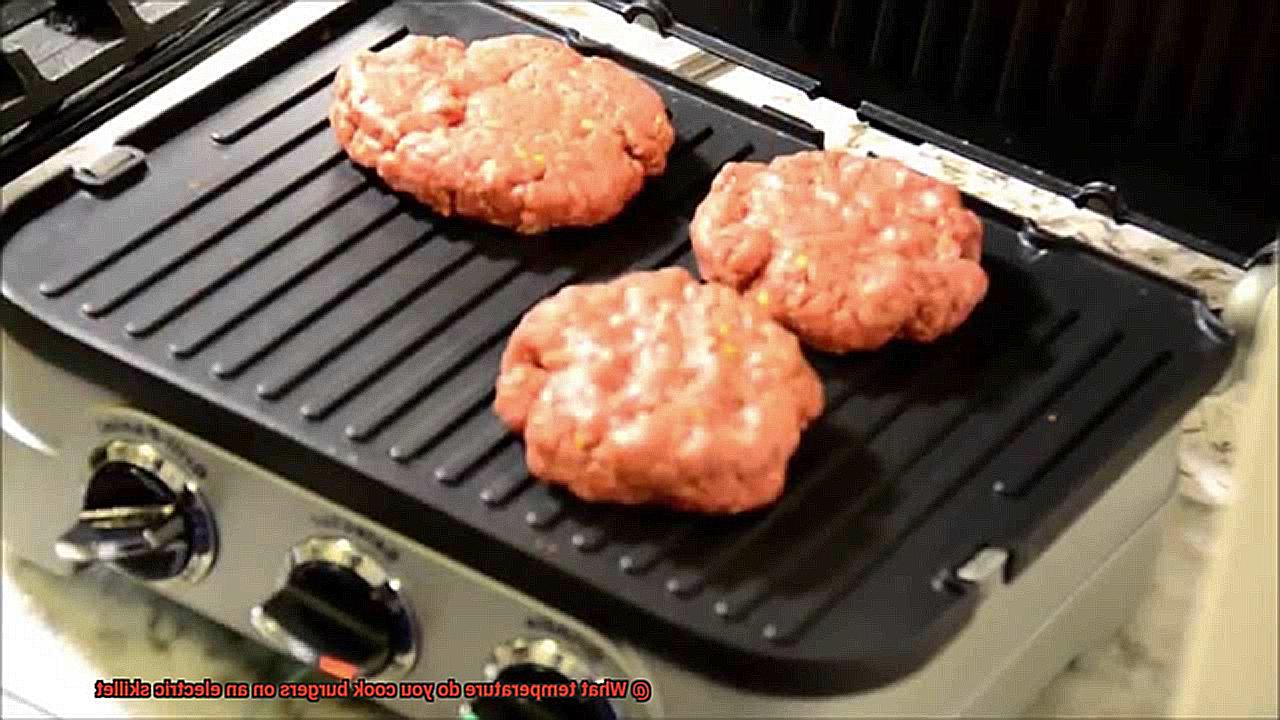
No matter how tempting it may seem, pressing down on your burgers can cause all the flavorful juices to escape from the patty, resulting in a dry and tasteless burger.
Don’t flip too often
Flipping your burgers too often can cause them to lose their shape and become dry and overcooked. Instead, let them cook for a few minutes on one side before flipping them over once or twice during the cooking process.
Don’t overcrowd the skillet
Cooking too many burgers at once can lead to uneven cooking and potentially burnt or undercooked burgers. It’s best to cook only a few burgers at a time, leaving space between them so that they can cook evenly and have room to breathe.
Preheat and monitor the temperature of the skillet
Preheating the skillet is important to create a non-stick surface and ensure even cooking. Use an infrared thermometer or check if water droplets sizzle and evaporate immediately upon contact with the surface.
Common Mistakes to Avoid When Cooking Burgers on an Electric Skillet
But don’t worry, with a few simple tips, you can avoid some common mistakes and ensure that your burgers turn out perfectly juicy and delicious.
First and foremost, it’s crucial to avoid cooking your burgers at too high of a temperature. While it may seem like a good idea to turn up the heat to speed up the cooking process, doing so can result in dry and overcooked burgers. Keep the heat at a moderate level and let your burgers cook slowly and evenly.
Another mistake to avoid is pressing down on your burgers while they cook. It’s a common misconception that pressing down will help them cook faster or more evenly, but in reality, this will cause all the flavorful juices to escape, leaving you with dry and bland burgers. So resist the urge to press down and let your burgers cook undisturbed.
Flipping your burgers too often is another common mistake that can ruin them. Flipping them once or twice is sufficient; any more than that can cause them to fall apart and lose their shape. Give them time to cook on one side for a few minutes before flipping them over to cook on the other side.
Finally, make sure not to overcrowd your skillet. Cooking too many burgers at once can cause them to cook unevenly or even remain undercooked. Leave enough space between each burger so that they can cook evenly and thoroughly.
kqA4itLG_lg” >
Conclusion
In the world of culinary delights, few things can compare to a perfectly cooked burger. And when it comes to convenience and ease of cooking, an electric skillet is the way to go. But what temperature should you set your skillet to for the ultimate burger experience?
The answer is simple: between 350°F to 400°F. This temperature range ensures that your burgers cook thoroughly while retaining their juicy goodness and crispy exterior. But don’t forget the importance of preheating your skillet. A non-stick surface is key to even cooking and preventing your patties from drying out or overcooking.
For those who love precision accuracy in temperature control, an infrared thermometer is a must-have tool. It saves time and energy while ensuring that your burgers are cooked to perfection every time.
But beware of common mistakes. Avoid turning up the heat too high, pressing down on your patties with a spatula, flipping them too often, overcrowding the skillet, or neglecting to preheat and monitor the temperature of your skillet.
With these tips and tricks in mind, you’ll be flipping burgers like a pro in no time.

